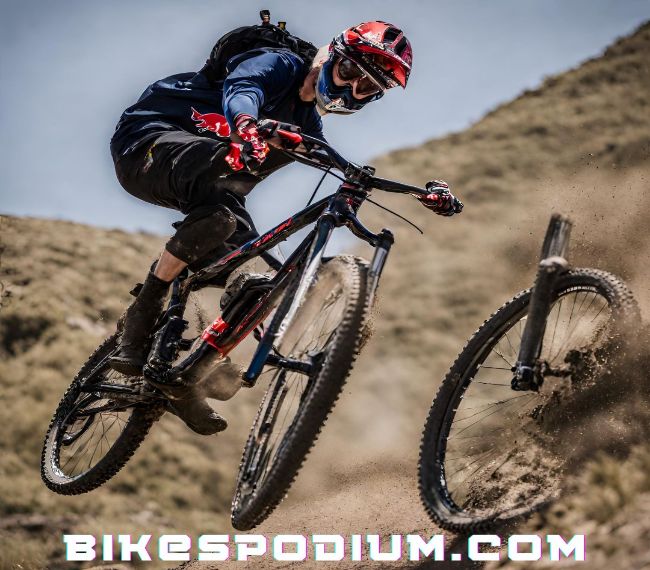
Mountain biking (MTB) is an exhilarating outdoor activity that allows riders to explore nature while enjoying the thrill of biking. Whether you are a beginner or an experienced rider, finding the right MTB trails is crucial to ensure a memorable and enjoyable experience. In this article, we will guide you on how to find the perfect MTB trails that suit your skill level and preferences.
Also Read:
Markham Park Mountain Bike Trails
1. Research Local Trails
When starting your search for MTB trails, it’s essential to research the local options available in your area. One of the best ways to gather information is by exploring websites, forums, or social media groups dedicated to mountain biking. These platforms often provide valuable insights about popular trails, trail difficulty levels, and user reviews. By reading through the experiences and recommendations shared by fellow riders, you can get a better idea of which trails might be suitable for you.
Another useful resource is local biking clubs. They are well-informed about the trails in the area and can provide personalized recommendations based on your skill level. Consider visiting nearby bike shops as well, as the staff are often knowledgeable about the local trails and can offer expert advice.
To make the most of your research, compile a list of potential trails to explore further. Note down the trail names, their difficulty ratings, and any additional information that stands out. This will help you narrow down your choices and plan your future rides effectively.
2. Utilize Trail-Finding Apps
In today’s digital age, there are numerous trail-finding apps and websites specifically designed for mountain bikers. These platforms offer detailed information about various trails, including difficulty ratings, trail conditions, elevation profiles, and even user-submitted photos and reviews. By utilizing these apps, you can enhance your trail-finding experience and gain valuable insights before hitting the trails.
Some popular trail-finding apps include Trailforks, MTB Project, and AllTrails. These apps provide comprehensive databases of trails from all around the world, allowing you to discover new and exciting options wherever you go. They often feature interactive maps, which can help you visualize the trail routes and plan your rides more effectively.
Additionally, these apps allow users to contribute their own trail information and updates, ensuring that the data remains up-to-date and reliable. Make sure to download one or more of these apps onto your smartphone to have a convenient and comprehensive resource at your fingertips.
3. Join MTB Communities and Groups
Connecting with fellow mountain bikers can be immensely helpful in finding great trails and expanding your knowledge of the sport. Joining MTB communities and groups, either online or offline, can provide you with valuable insights and recommendations.
Online platforms such as Reddit’s MTB subreddit or Facebook groups dedicated to mountain biking are excellent places to seek advice, share experiences, and discover new trails. These communities often have members who are eager to help and share their favorite trail recommendations. By actively participating in these groups, you can tap into a wealth of knowledge and gain access to insider tips about trails in your area or even in other regions.
Furthermore, consider joining local biking clubs or attending biking events. These clubs and events provide opportunities to meet experienced riders who can guide you towards exciting trails. They may even organize group rides where you can explore new trails together and learn from one another. Building connections with other riders can not only enhance your trail-finding experience but also foster a sense of community within the sport.
4. Consult Local Biking Shops
Local biking shops are often staffed with knowledgeable employees who are passionate about biking. They can offer valuable advice on the best trails in the area and provide you with firsthand information about the local riding scene.
When visiting your nearest biking shop, don’t hesitate to ask the staff about recommended MTB trails suitable for your skill level and preferences. They may have insider knowledge about hidden gems or lesser-known trails that are not widely advertised. Additionally, they may provide you with maps, brochures, or guidebooks that offer additional information about nearby trails. These resources can be invaluable in helping you plan your rides and navigate the trails with ease.
Moreover, biking shops often organize group rides or events for the local biking community. Participating in these activities can not only introduce you to new trails but also connect you with like-minded riders who can become valuable trail buddies or mentors. Take advantage of the expertise and resources available at local biking shops to enhance your MTB experience.
5. Attend MTB Festivals and Races
MTB festivals and races are not only thrilling and fun but also excellent opportunities to discover new trails. These events typically showcase the best trails in the vicinity and attract riders from different skill levels. Participating in or spectating these events can provide you with firsthand experience and knowledge about the local MTB scene.
When attending MTB festivals or races, make an effort to talk to fellow riders and event organizers. Strike up conversations and inquire about their favorite trails or any hidden gems they may know about. The biking community is often eager to share their experiences and recommendations with others. By networking and building connections at these events, you can uncover trails that you might not have discovered otherwise.
Additionally, pay attention to event programs or websites, as they usually provide information about the trails featured in the festival or race. Note down the names of these trails and any interesting details mentioned. This way, you can add them to your list of potential trails to explore in the future.
6. Explore National and State Parks
National and state parks often offer well-maintained trails that are suitable for mountain biking. These parks are ideal for riders who enjoy immersing themselves in nature and experiencing diverse terrain. Research parks near your location and check their websites for information about mountain biking opportunities.
Some parks may have designated MTB trails, while others allow biking on certain trails with specific regulations. It’s crucial to familiarize yourself with any park regulations, permits, or trail restrictions before embarking on your adventure. This ensures that you have a safe and enjoyable biking experience while respecting the park’s rules and preserving the trails for future riders.
Keep in mind that national and state parks often have stunning natural landscapes and unique ecosystems. Take the time to appreciate the beauty of your surroundings while riding through these trails, and consider learning about the park’s history and conservation efforts. By incorporating an educational aspect into your rides, you can deepen your appreciation for nature and contribute to its preservation.
7. Consider Local Topography and Climate
When searching for MTB trails, it is essential to consider the local topography and climate. Different regions offer diverse terrain and natural features that can greatly impact your riding experience. Some areas may have forests, mountains, coastal regions, or a combination of these landscapes, each offering a variety of trails to suit different preferences.
Research the topography of your area and determine which type of terrain appeals to you the most. If you enjoy technical descents, look for trails with steep slopes and rocky sections. For a more scenic and leisurely ride, seek out trails with gentle slopes and picturesque views. Understanding the local topography will help you narrow down your options and find trails that align with your riding style and preferences.
Additionally, consider the climate of your region and how it affects trail conditions. Wet or muddy conditions may make certain trails more challenging or unsafe to ride. Take into account the seasons and weather patterns when planning your rides, and be prepared to adapt your routes if necessary. By considering the local topography and climate, you can ensure that your rides are not only enjoyable but also safe and manageable.
8. Start with Beginner-Friendly Trails
If you are new to mountain biking or still developing your skills, it is crucial to start with beginner-friendly trails. These trails are designed to introduce riders to the sport gradually and provide a safe environment for practice and skill development.
Look for trails with lower difficulty ratings and shorter distances to build your confidence and technique. Many trail-finding apps and websites categorize trails based on difficulty, making it easier for beginners to find suitable options. Pay attention to the trail descriptions, which often provide information about the terrain, elevation changes, and technical features you can expect to encounter.
Starting with beginner-friendly trails allows you to focus on mastering the fundamental techniques of mountain biking, such as braking, cornering, and shifting gears. As you gain experience and improve your skills, you can gradually progress to more challenging trails. Don’t rush the process and remember that everyone progresses at their own pace. Enjoy the journey of learning and growing as a mountain biker.
Remember, safety is paramount when mountain biking. Always wear appropriate safety gear, including a helmet, gloves, and protective clothing. Inform someone about your planned route and estimated time of return, especially when riding alone. Carry essential supplies such as water, snacks, a first aid kit, and a fully charged mobile phone. It’s also important to respect the environment and adhere to trail etiquette to preserve the trails for future riders.
Enjoy the adventure of exploring new MTB trails, and may every ride be filled with excitement, stunning views, and unforgettable moments!
*Edited and improved by a SEO content writing expert fluent in English.



